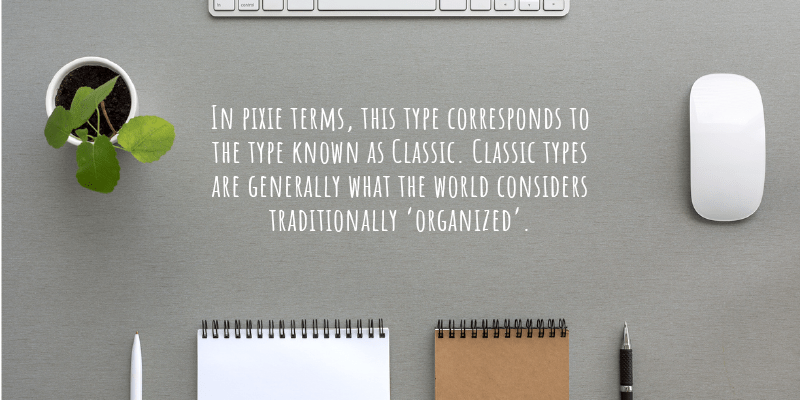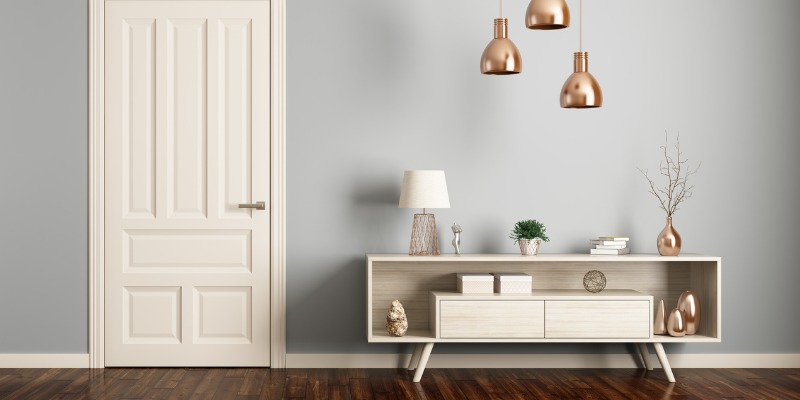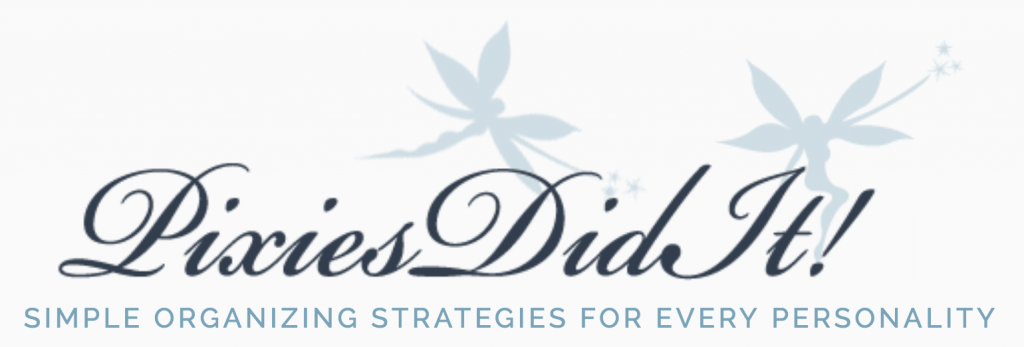How Do ESFJ Personality Types (Pixie Type: Classic) Organize Their Entryways?
Everyone knows that first impressions go a long way. This is why good organization for your entryway is so vital: it’s the first thing your visitors see when they walk through the front door! It is also the first space that you enter after a long day, and the more welcoming and comfortable you feel upon entering your own home, the better. For ESFJ personality types (pixie type: Classic), an entryway needs to be a clean, crisp, clutter-free space with a built-in organizational system. In other words, shoes go in one place, coats go in another, keys go in yet another. If you’re an ESFJ personality type, everything you enter your house carrying or wearing, with the exception of the groceries, must have a designated, preferably closed place in the entryway.
But what on earth is an ESFJ, and moreover, what is a pixie type? Read on, friend. All will be revealed (or hidden, as the case may be).
Myers Briggs Personality Type ESFJ
Isabel Briggs was known to say, “The understanding of your type can make your perceptions clearer, your judgments sounder, and your life closer to your heart’s desire.” We would add, “and help you get and stay organized!” The Myers Briggs model informed our development of the four pixie types, which are Classic, Fun, Organic, and Smart. Much like the Myers Briggs types, none of the pixie types is superior or inferior to the others. Rather, they are information that will help you find your organizational groove. We came up with the four pixie types in the hope of helping people discover their naturally inclined ways of doing things and getting things done. This includes the ways in which we organize our lives and our homes.

The Myers Briggs Personality Type Indicator is a tool that was developed by Isabel Briggs Myers and her mother, Katharine Briggs. The tool was designed to explore and explain the ways in which different personality types operate. The 16 personality types represent four major aspects of life: your ‘world’ focus (represented by Extraversion or Introversion, or E/I), the way you process information (represented by Sensing and Intuition, or S/N), the way you make decisions (represented by Thinking and Feeling, or T/F), and the way you prefer to structure your life (represented by Judging and Perceiving, or J/P).
ESFJ stands for Extraverted, Sensing, Feeling, and Judging. This Myers Briggs type is empathic and people-oriented yet pragmatic and practical. These types are responsible and capable caretakers who are orderly and conscientious.
Pixie Type: Classic

In pixie terms, this type corresponds to the type known as Classic. Classic types are generally what the world considers traditionally ‘organized’. (Our organization definition is much different, but you’ll have to buy our book to find out what it is!) They thrive on details, set schedules, advance plans, To Do lists, and organizational systems. When and if they make piles, they are never egregious or disorderly, as they loathe clutter to the nth degree. In fact, one of their major pitfalls as organization wizzes is the fact that they stuff clutter into closets and drawers (and anything that keeps it out of sight) so often that said closets and drawers are filled to the brim with disordered ‘stuff’ instead of rationally put together and neat.
The ESFJ and The Entryway

Considering what we know about ESFJ personality types and Classic pixie types, how would you imagine an entryway to look? We will tell you, and outline the ways all you ESFJ (and Classic) personality types can create the entryway of your dreams:
- Purge each year, or better yet, each season: Purging essentially means going through what you have and getting rid of what you don’t need. Those scuffed knee-high purple boots you bought (when purple was ‘in’)? Toss them. That broken umbrella? Who on earth needs a broken umbrella? You get the point. Keep, Toss, Store. And repeat.
- Label EVERYTHING: ESFJ and Classic personality types are the likeliest of the bunch to own a label-maker. Use it. Go ape! Get a bunch of bins and label them all to make storage as easy as possible for everyone involved (including the kiddos).
- Maintain your sanity by having a designated place for everything in your entryway space. Know this about yourself: that a lone little sneaker in the corner or a jacket on the floor will not end well.
- Use hidden storage every chance you get: By ‘hidden storage’, we mean benches that open to reveal storage space. Coat racks with storage space at the bottom. Etc, etc.
Follow these rules, and mix them with some generally applicable ones, and you’ll no longer dread opening that hall closet, or spend an hour hunting for a lost mitten.
General Entryway Rules

Some tried-and-true entryway organization methods that we all could benefit from are:
- Install hooks: If you’re an ESFJ (Classic), install hooks inside the closet and if absolutely necessary, in the hallway. These personality types hate the sight of anything that could otherwise be hidden inside of a closet, but large families sometimes call for wall hooks.
- Use a tray as a temporary mail holder: ESFJ types will naturally empty this regularly, but it gives them a place to put the mail while they’re hanging their coat (in the closet).
- Use bins to store shoes on the closet floor.
- Buy some rugs (these will prove both beautiful and practical).
- Get an umbrella stand.
These are only a handful of ideas, but they will put you on the right path to an entryway you’ll be proud of. After all, a good first impression is worth everything. Or at least a lot.

